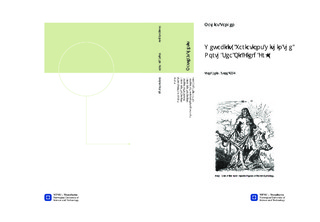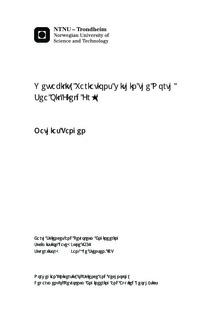| dc.description.abstract | Wettability is one of the most important parameters governing the rate of oil recovery from a porous medium. This thesis is a study of the wettability variations within the Frøy field in the North Sea, and its effect on the oil recovery. Several reports regarding the wettability and relative permeability of the Frøy field are available, and the conclusions from these reports are presented. The overall conclusion is that Frøy is on the oil-wet side of the wettability scale, with measured Amott-Harvey wettability indices ranging from -0.00189 to -0.73. An attempt was made to find wettability trends, relating the wettability index to variables such as distance above the water-oil contact, geological facies, permeability, the core s staining level and so on, based on the measured data. Unfortunately, no such trend was identified.Only nine wettability measurements were available from the Frøy field while writing this thesis. This thesis concludes that in order to get a good statistical data set that can be used for establishing wettability trends, several wettability tests should be performed on cores sampled from a variety of distances above the water-oil contact, with different permeabilities and color staining levels, representing different rock types. And it is important to make sure that the cores have their original (native) wettability during the tests.More than 50 simulation cases have been made and run during the work on this thesis, testing the effect of wettability variations on Frøy, using the Schlumberger reservoir simulation program Eclipse 100. Wettability variations are simulated by assigning different relative permeability curves to different saturation function regions in the reservoir. For this reason, five sets of relative permeability curves were made, that represents wettabilities ranging from slightly water-wet to oil-wet, and different combinations of these curves were used in the simulation cases. There are many uncertainties in the given data and there are different ways of initializing the simulation model which may affect the simulation results. These issues are discussed in a separate chapter of the thesis.The simulation results showed that when the reservoir rock went from water-wet to oil-wet, the oil production went down, the water production went up, the water breakthrough occurred earlier and the oil recovery factor went down. The different producing wells were not equally affected by changes in the wettability.Two important conclusions were drawn from the simulation results. Firstly, it is difficult to estimate the effect of wettability variations on the production profiles if not the aquifer support and the fault transmissibility factors are modeled correctly, since these parameters also affect the production. And secondly, it is the wettability of the bottom half of the 225 meter thick reservoir zone that affects the production profiles of the wells. The wettability of the top half of the reservoir zone hardly affects the production profiles at all. | nb_NO |

